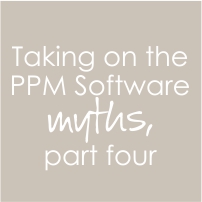 Many organisations today have some form of matrix organisational structure in place. A matrix organisation is one where functional leaders are responsible for more than one area, with their resources having a dotted line reporting to one or more project managers. The problem is, these environments often result in confusion for the team and frustration for the functional manager, with questions like “What are my priorities?” and “Where are my resources spending their time?” arising.
Many organisations today have some form of matrix organisational structure in place. A matrix organisation is one where functional leaders are responsible for more than one area, with their resources having a dotted line reporting to one or more project managers. The problem is, these environments often result in confusion for the team and frustration for the functional manager, with questions like “What are my priorities?” and “Where are my resources spending their time?” arising.
One way of alleviating these challenges and creating a cohesive, consolidated understanding of the total environment and resources is to implement Project Portfolio Management (PPM) software, thus allowing for informed spending and resource decisions. This edition of the series of myths focuses on how PPM solutions can equip functional managers with the information they need to stay informed and make better decisions regarding their people resources. Read the first three parts of this series here, part one, part two and part three.
Myth four: PPM software provides no benefit to the operational level of the organisation
Project managers and their operational counterparts need to work together to gain agreement on the most effective use of the finite resources (most importantly people) available and operate with transparency. For many organisations, implementing a PPM solution has contributed to improving the working relations for these conflicting areas of the organisation. In addition to the expected benefits afforded to the project manager, PPM tools like Project Portfolio Office (PPO) provide the functional manager with current and accurate information about what their teams are doing — even when they are involved in everyday work, strategic or ad hoc projects. This allows the functional manager to report on their team’s activities and better manage their people and what they are working on by planning their time.
What’s in it for the functional manager?
Most tools – as a minimum – provide some basic form of capacity planning, resource management and time reporting. While capacity planning will enable the manager to set resource utilisation targets and determine the capacity for work, time reporting allows for the evaluation of resource performance for the time spent on projects and ad hoc work assignments, which provides visibility into the actual work progress, current work status and remaining work. Resource management will help the manager understand the assignment of resources to current and future projects and non-project related work.
Are you looking for a project portfolio management and collaboration tool that facilitates improved resource management and provides value to more than just the project manager? If so, try a free 30-day trial of Project Portfolio Office today at: www.go2ppo.com/try.php.


